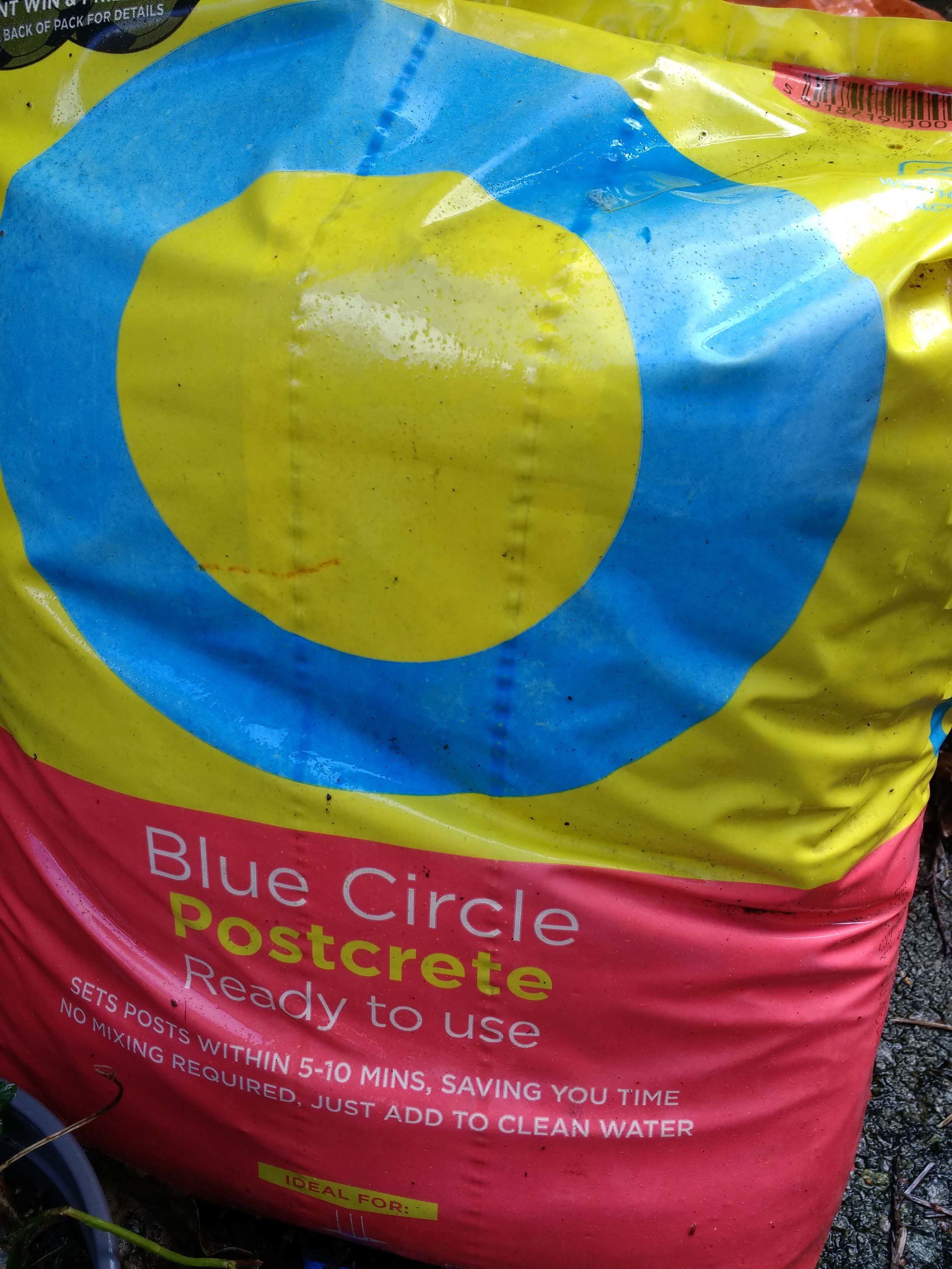Welcome to our Foam Free, Freestanding Installation know how post. It’s not going to be preachy. The bottom line is we all know that floral foam is an environmental disaster, there simply is no place for it. So, as event florists up and down the country have to work out (in a very Heath Robinson fashion) how to work without it, my trusty flowery friend Fiona West of Like the Moon in Daytime, and I took off last week to document the process and share a few tips with everyone.
Step 1
Blue Circle Postcrete is your friend, using a plastic garden trug, pierce holes into the bottom to allow for drainage. Simply pop your drainpipe into the trug, poor in the Postcrete add water. At this point it’s imperative the post is straight (I have a made a couple slightly off kilter, it’s not the end of the world). You will need to be strong, these weigh around 20kg. It’s worth carrying a heavy duty wheelie trolley to move around.
Step 2
If there is any chance the post will be visible, cover in moss, this is wired on. Overlay with chicken wire and secure tightly either by wiring on or with a few cable ties. Snip a single piece of the chicken wire to insert the spikes. Depending on how floriferous the design, you may need spikes closer together and fill the whole post if you’re going for a full on flower heavy design.
Step 3
Insert the foliages directly into the chicken wire. This design used entirely British grown foliages a mix of cupressus, confier, catkins, pussy willow, ivy, skimmia, fatsia, spirea, birch and there’s always the point where we don’t want to add the flowers because the foliages look incredible. Fill the spikes with water and add the flowers.
Step 4
Tubes. These tubes hold a small amount of water, and have little rubber tops that the stems are poked into. We actually found this size too small for the spring flowers with their thicker stems, but they are available in larger sizes. Everything is a learning curve, so it’s worth trying it out before committing to a large event and stressing yourself. Another tip I have learnt over the years is that people assume these can easily be moved. They can’t. You can say no!
The asymmetrical freestanding design is perfect for entrances to marquees and churches where there are no fixing points, anywhere you want to create a wow factor. The Postcrete is dirty, so wrap in a sheet until you’ve moved it into place, but the benefit of the weight is you know it’s not going to topple over.
We used a mixed box of British grown flowers from Clowance in Cornwall, which included scilla, snowdrops, narcissi and tulips. Our host for the day was Philippa at Just Dahlias, who was fabulous, hot soup on a very cold day can never be underestimated. Philippa provided the most incredible camellia and delicate pink blossom which just made the whole design pop.
Has this been useful? Or has it thrown up more questions? Lets keep this conversation going and share our findings.











